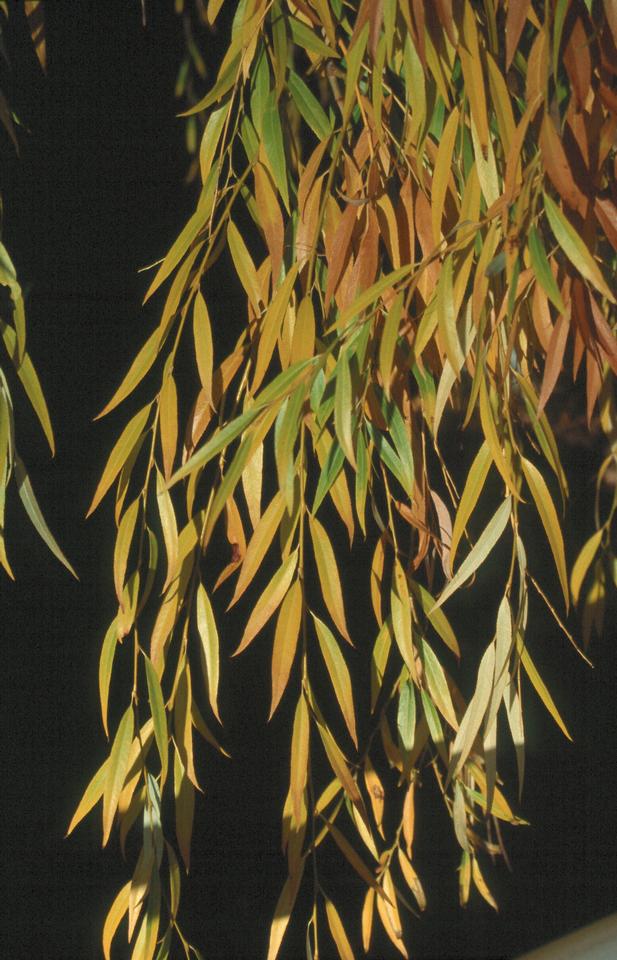Willow, Weeping
Salix babylonica
Salicaceae - Willow
Description
See also Peachleaf Willow description.
Leaves: Alternate; simple; pale beneath; narrow-lanceolate; deciduous.
Twigs/buds: Twigs greenish-gold to greenish-brown, can be reddish-brown on upper surface, mostly hairless; very long and flexible; hanging or drooping (hence, the name "weeping willow"). Buds long; only one outer scale visible (like other willows).
Flowers/fruit: Flowers dioecious; yellow catkins, upright, fuzzy; inconspicuous, 1" long. Fruit found in clusters of light brown capsules, cone-shaped, 1/16" long; seeds cottony, ripen late in May to early in June.
Bark: Grayish-brown, rough; irregularly furrowed.
Wood: Brittle or weak; little information available.
General: Native to China. Popular shade tree with a weeping or drooping form. Grows fast, short-lived. Weak wood and/or branch structure. Prefers abundant water. Rarely should be planted, though limited use in specific situations may be justified.
Landscape Use: Many people like this tree. Like most willows, however, it has a lot going against it. It needs quite a bit of water, has weak wood from the trunk to the twigs, and grows too fast for most locations. Graceful, weeping habit is a plus, but this often can be achieved with better species. The form usually found is a female. Zones 5-8. Golden weeping willow (S. alba 'Tristis') is another willow with a weeping form that also is called weeping willow.
Cultivars: 'Annularis', 'Blue Fan', 'Crispa'.
Characteristics
General
| Family | Salicaceae - Willow |
|---|---|
| Cultivar Availability | Yes |
| Hardiness Zone | 5-8 |
| Type | Broadleaf |
| Utah Native | No |
Growth
| Growth Rate | High |
|---|---|
| Mature Height | High |
| Longevity | Medium |
| Is Good Under Power Lines | No |
| Crown Shapes | Weeping |
Ornamental
| Bark | No |
|---|---|
| Fall Color | Yes |
| Flowers | No |
| Foliage | Yes |
| Fruit | No |
Tolerance
| Shade | Low |
|---|---|
| Salt | High |
| Drought | Low |
| Poor Drainage | High |
| Alkalinity | High |
| Transplanting | High |



